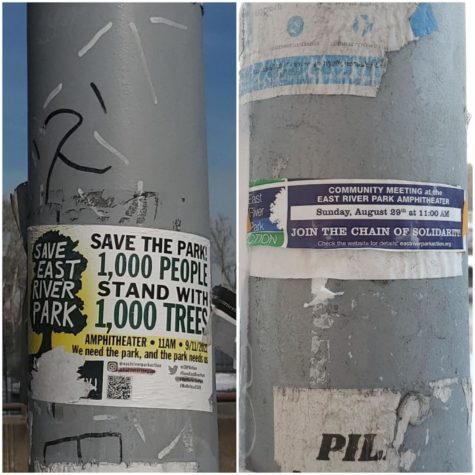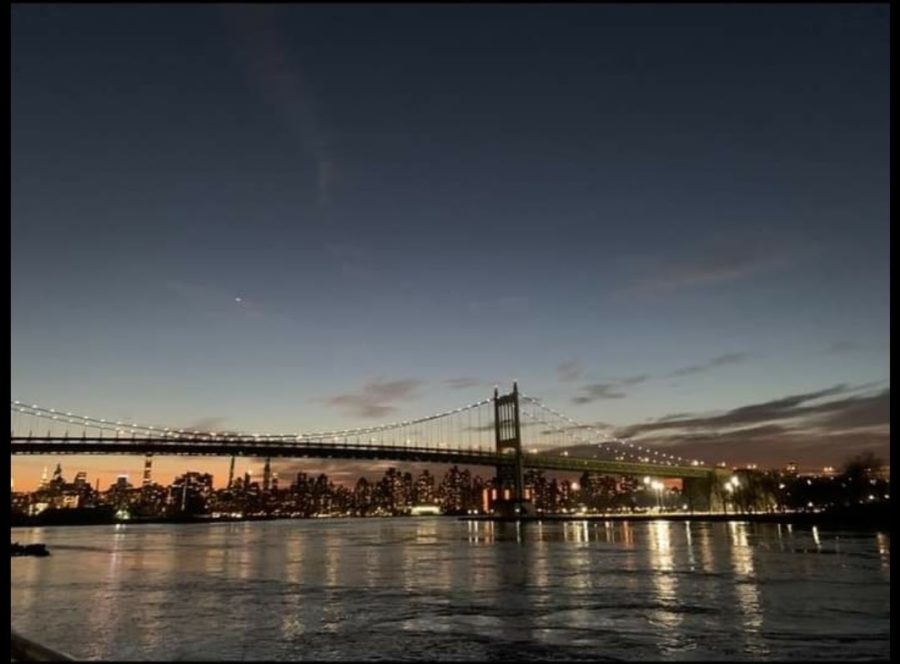Destroy or Defend: The East River Park Conflict in New York City
The destruction of the East River Park has the potential to segue into stronger park blueprints or to destroy the City’s legitimacy.
The Williamsburg Bridge connects the Lower East Side to Williamsburg, and it has drawn many to the East River Park.
The John V. Lindsay East River Park opened in July 1939, a month after legendary baseball player Lou Gehrig retired from the Yankees and a few months before the second world war. The Park has stood witness to great transformations in New York City, and its disappearance will be the next biggest transformation.
The Park was designed by the controversial Robert Moses, who has been accused of unethical constructions that destroyed predominantly low-income neighborhoods, with many Black and Latinx residents. However, the construction of the East River Park did not damage surrounding neighborhoods, but rather provided residents of the Lower East Side with space in order to relax to commune, and to move. Moses decided that the community would need something that made living near an expressway, the Franklin Delano Roosevelt Drive, worthwhile.
The daring personality of the Park was established with the addition of a 2,500-seat amphitheater in 1941. The amphitheater highlighted the creativity of New Yorkers by hosting plays, comedy shows, concerts, and even graduations. Thirty years later, in 1973, Mayor John V. Lindsay ordered the amphitheater to be indefinitely shut down, as the city could no longer afford to maintain the structure.
In the decades following, the ruins of the neglected amphitheater were covered in graffiti and seemed beyond saving. That was, until September 11th, 2001. The terrorist attacks on the twin towers left New Yorkers devastated and traumatized. Mayor Rudy Guliani decided that New Yorkers desperately needed something to revive a sense of hope and community in the city. In December 2001, the amphitheater was renovated and reopened to the public.
Twenty years later, in December 2021, the amphitheater was demolished once more. This time, the culprits weren’t bored teenage vandals, but instead professional construction workers under the orders of city agencies.
Along with the amphitheater, trees have been cut down and removed, leaving the park bare and deprived. Why would the city sanction such destructive and environmentally unfriendly proposals?
The answer lies within a paradox. Reflecting on the devastating nature of Hurricane Sandy and the possibility of stronger natural disasters, the city released a plan to destroy the park in the hopes of saving it, long-term. The plan aims to provide flood protection by constructing a more durable park that will be elevated on top of the ruins of the demolished park.
This plan is a part of the East Side Coastal Resiliency Project (ESCR), which currently affects two other smaller parks: Murphy Brothers Playground and Asser Levy Playground. The mission of the project has drawn criticism from protestors, who believe that the plan will be a martyr, killed by the city’s savior complex.
Protestors have claimed that the plan significantly lacks transparency. This claim was at the center of a lawsuit filed against New York City by East River Park Action in February 2021. The lawsuit argued that the destruction was unlawful, because the ESCR failed to file a motion declaring the East River Park as “Alienation,” which is a legal process that requires the city to obtain approval from the state before the park can be shut down and construction begins. In December 2021, the court sided with the city, enabling the continuation of the demolition.

Located near several schools, housing projects, and religious centers, the demolition of the East River Park has made neighboring people become concerned that construction will concentrate pollution in the area, resulting in respiratory problems for Lower East Side residents. This is an especially risky threat considering that these respiratory problems would be amplified if a resident simultaneously has COVID-19, during the ongoing COVID-19 pandemic. Additionally, many people in the area are low-income, living in public housing, and they would struggle in order to cover the costs of hospital bills that would arise from their health issues.
But what more can New York City do? The park will unquestionably become flooded if it has to encounter another Hurricane Sandy. But what if there was no impending threat of a natural disaster?
“If the city really wanted to save coastal parks, they would invest more money and time into combating climate change directly rather than treating it as something inevitable,” said Sophia Randall ’22.
Regardless of whether or not NYC halts or continues demolition, New Yorkers can be certain that their city will change in unpredictable ways, for better or for worse.
The answer lies within a paradox. Reflecting on the devastating nature of Hurricane Sandy and the possibility of stronger natural disasters, the city released a plan to destroy the park in the hopes of saving it, long-term. The plan aims to provide flood protection by constructing a more durable park that will be elevated on top of the ruins of the demolished park.
Aissata Barry is a Copy Chief for ‘The Science Survey.’ She believes that journalism is appealing because it creates a fascinating connection between...











